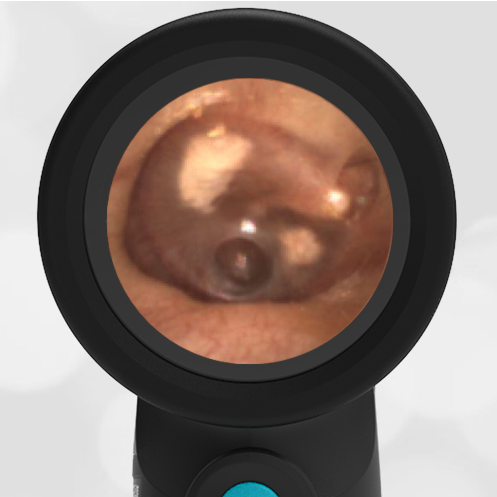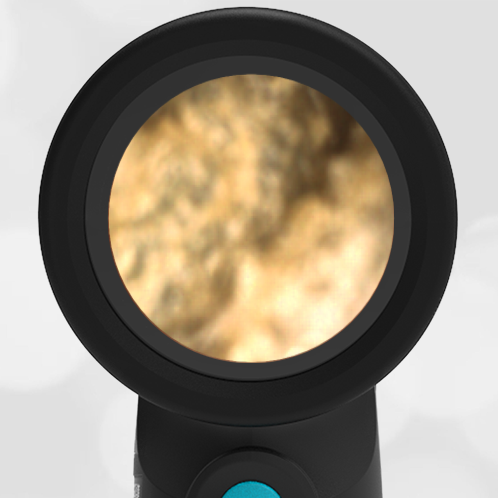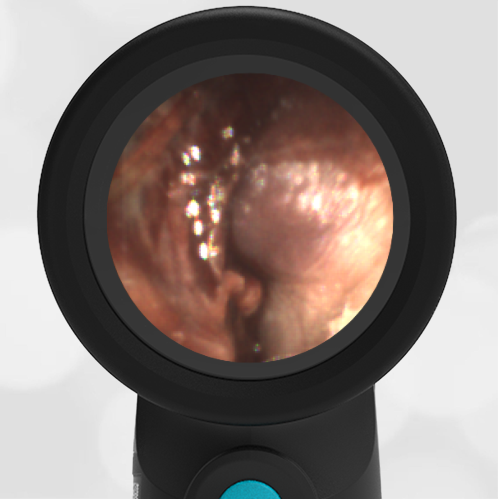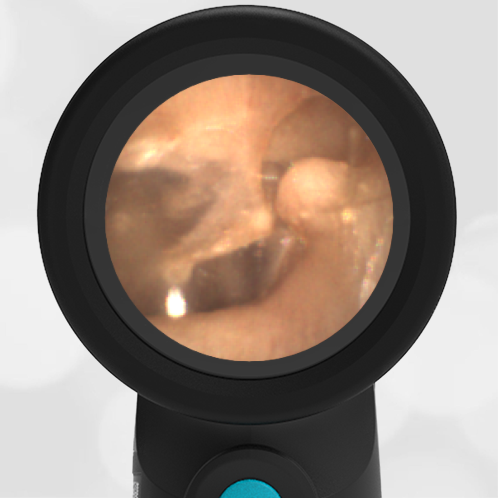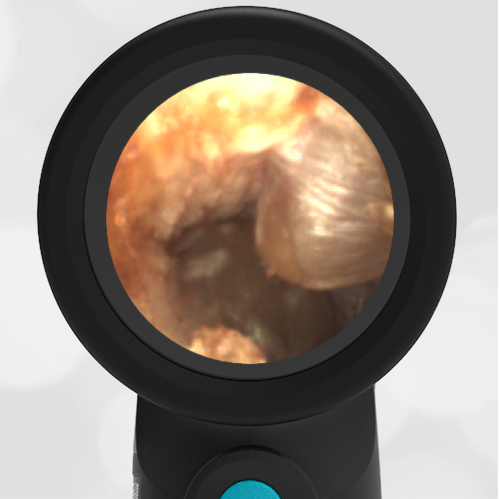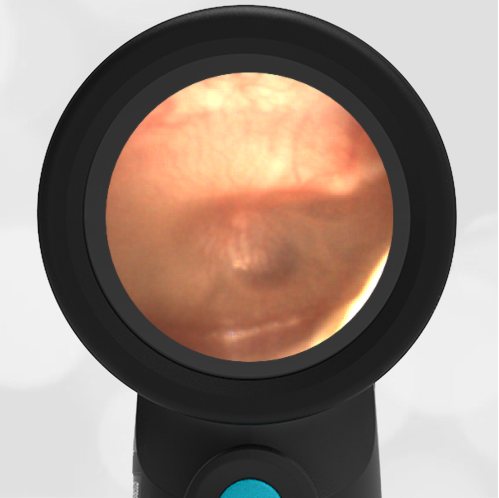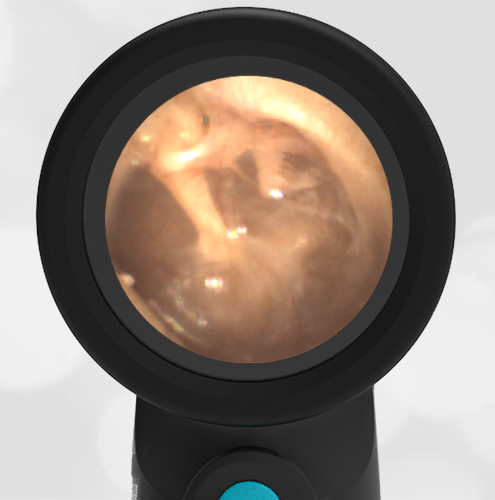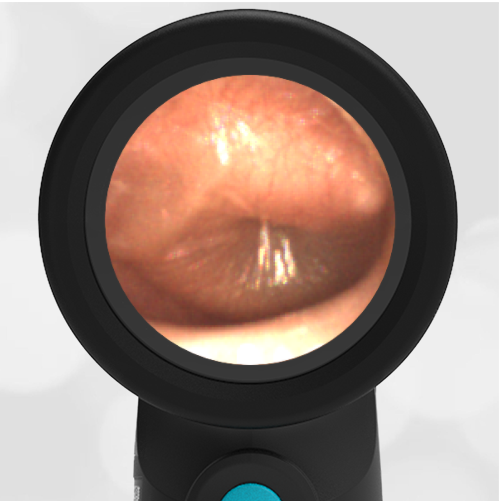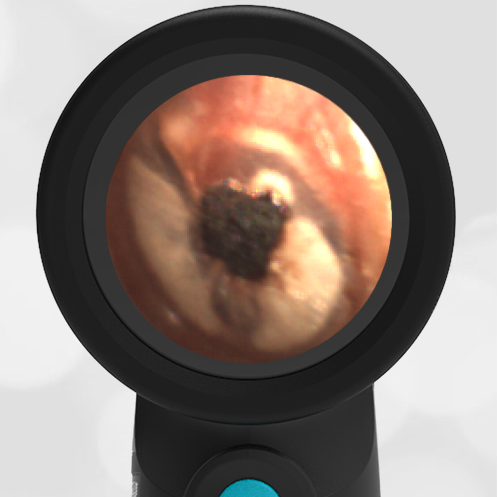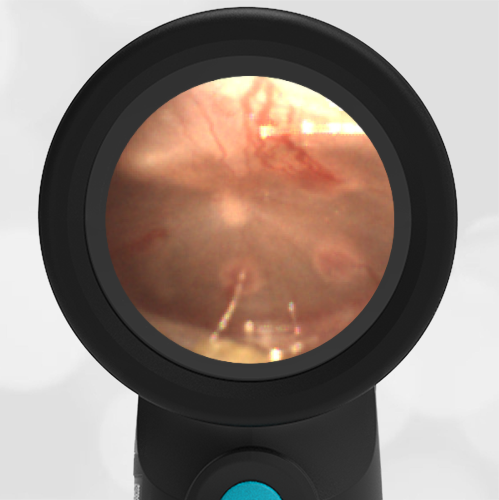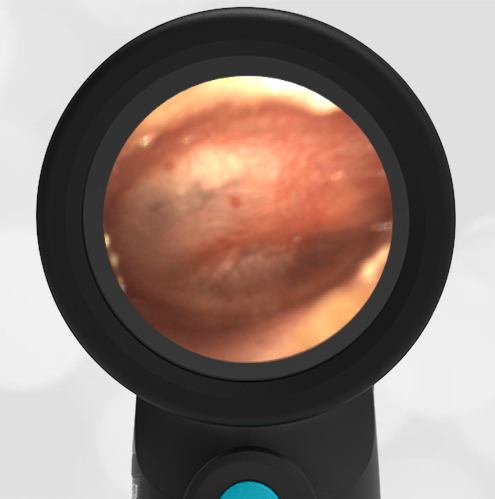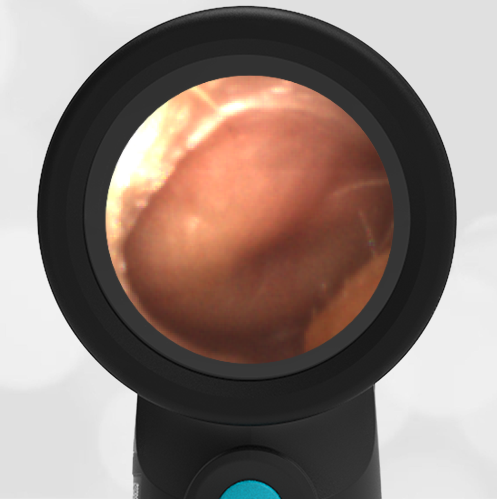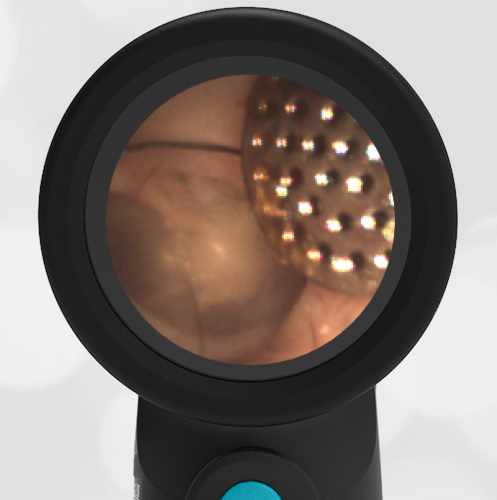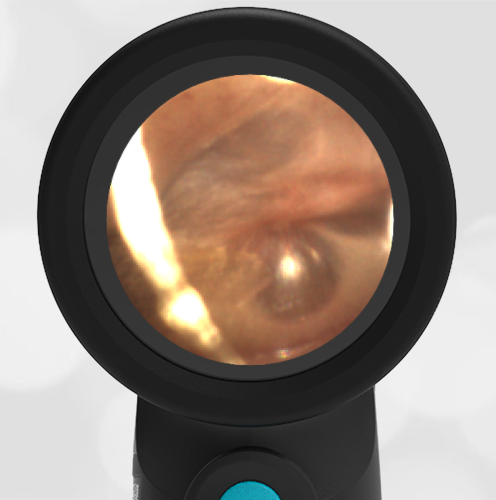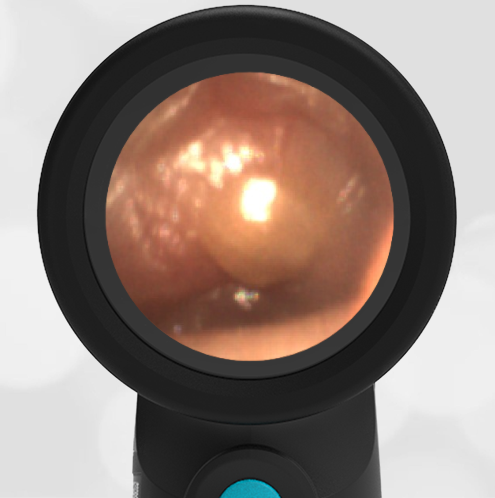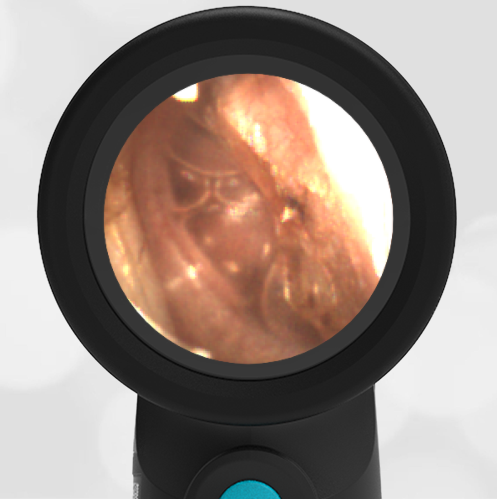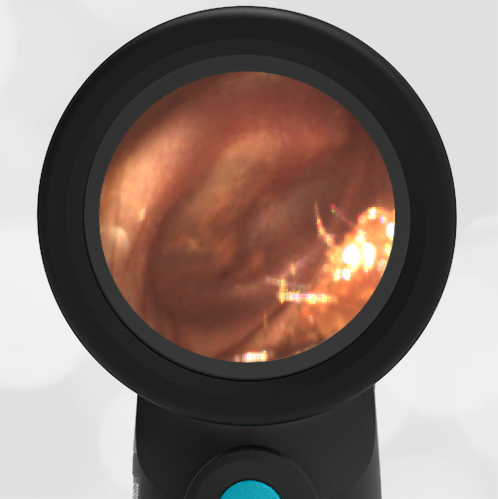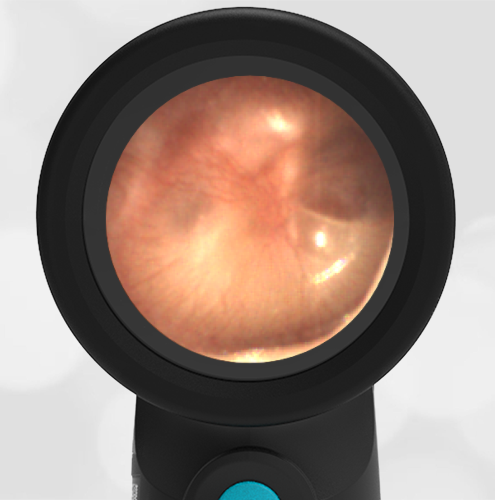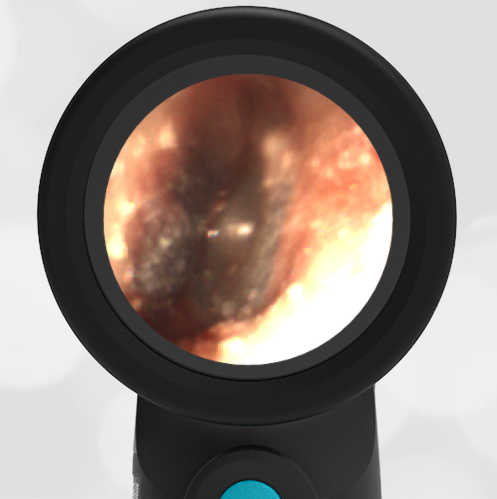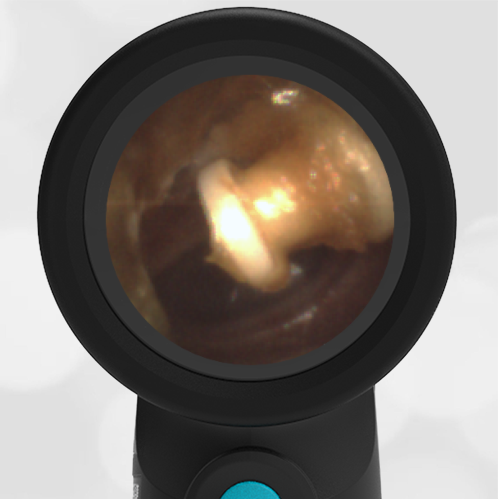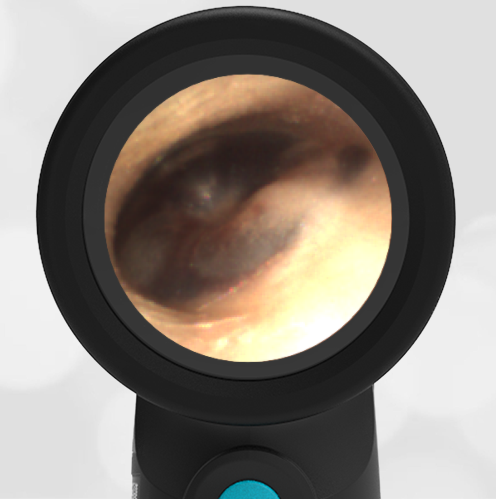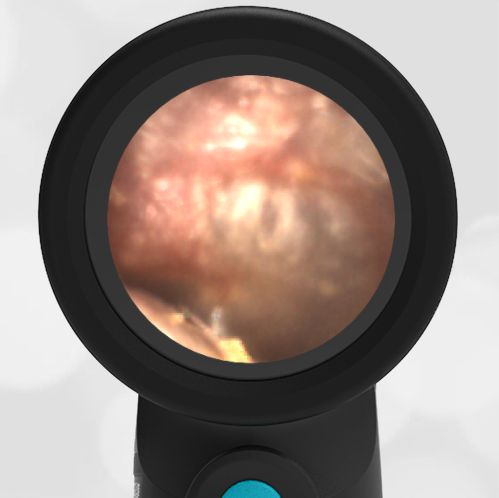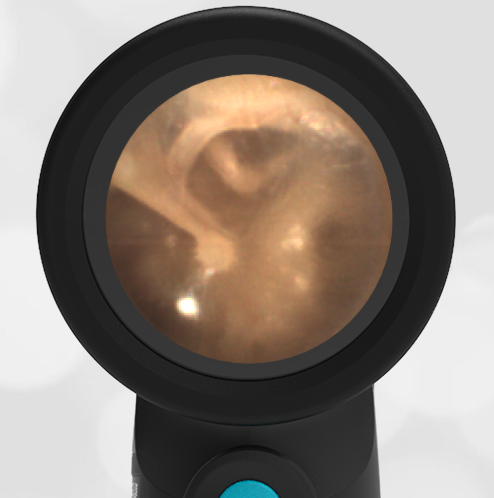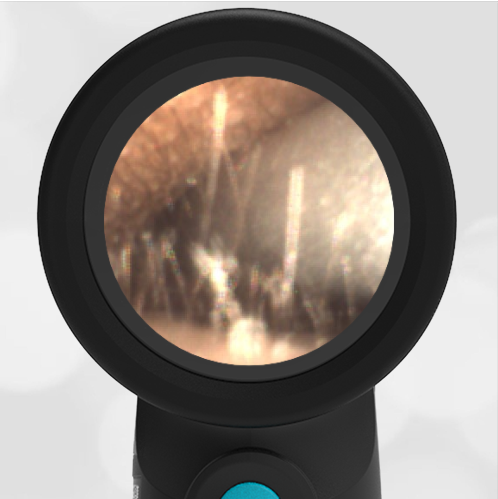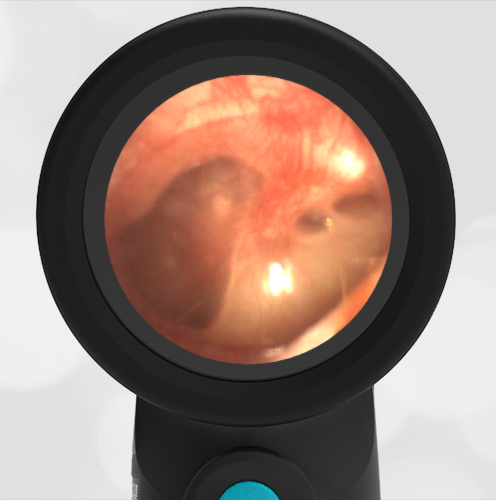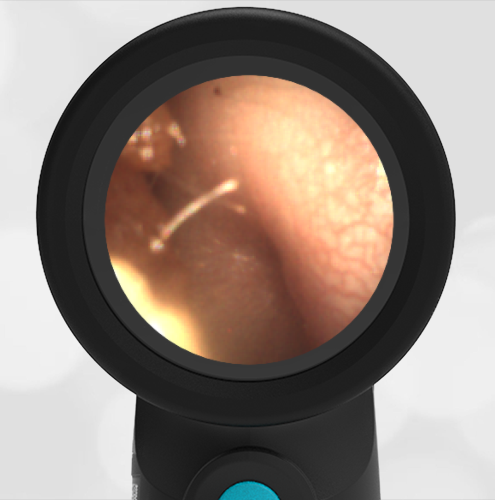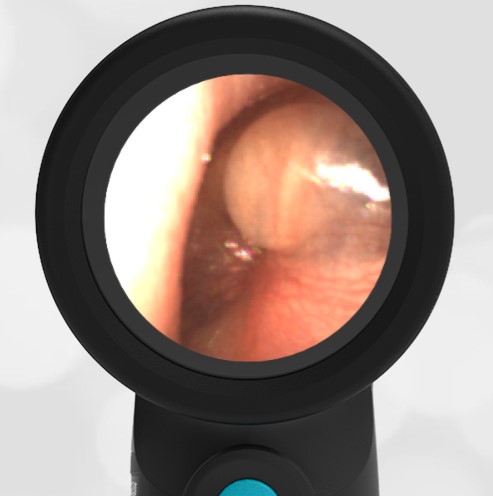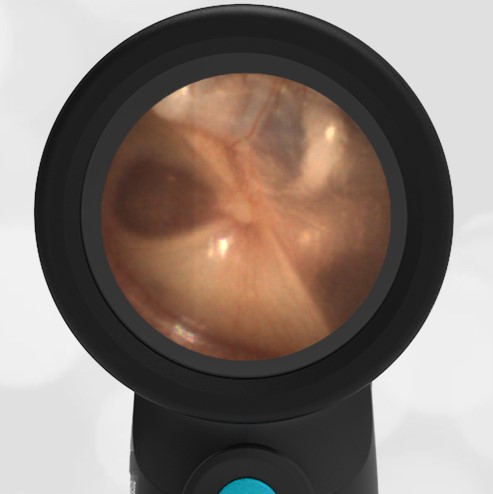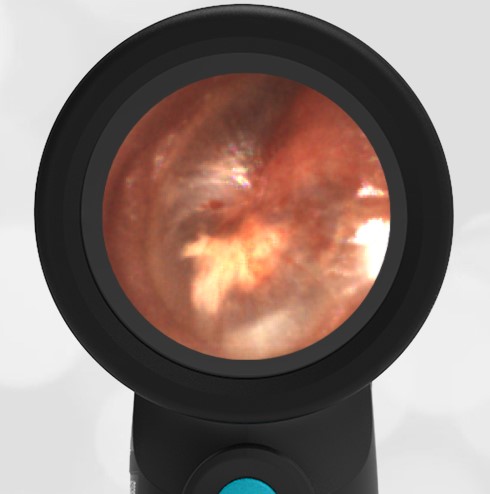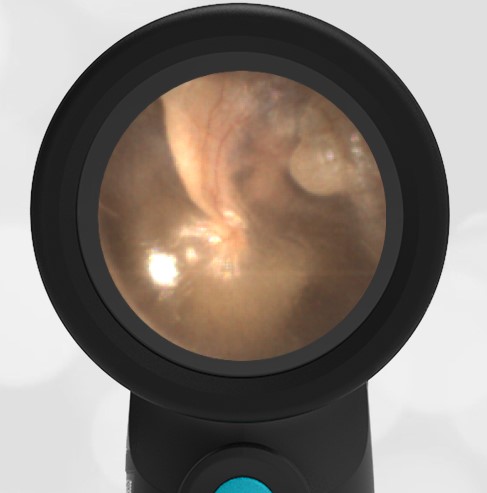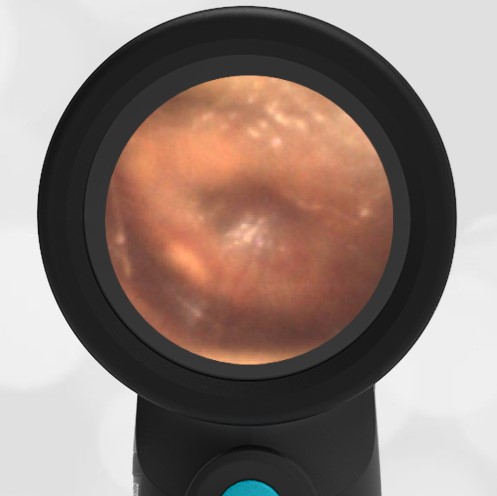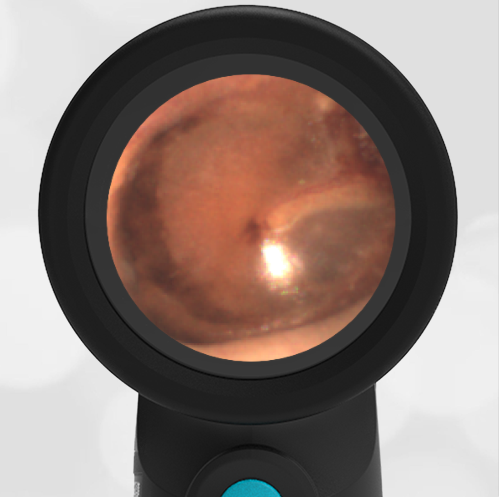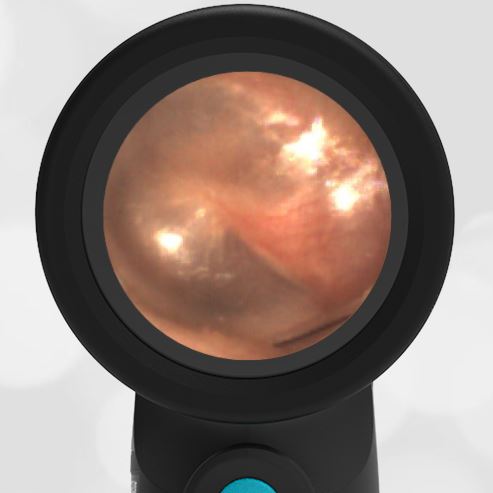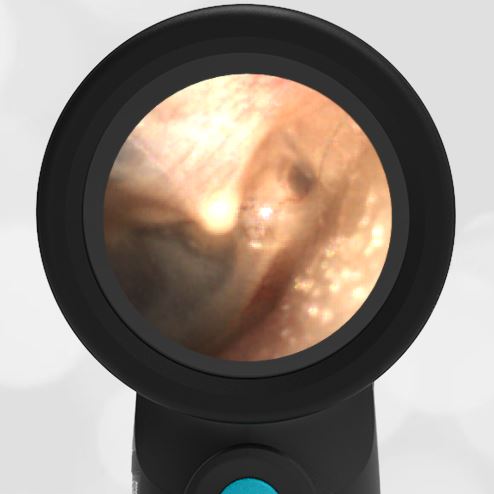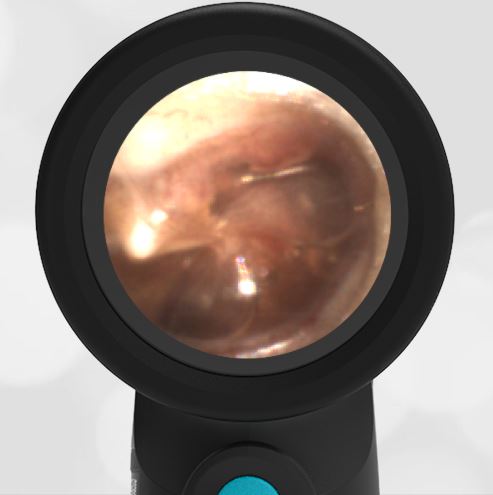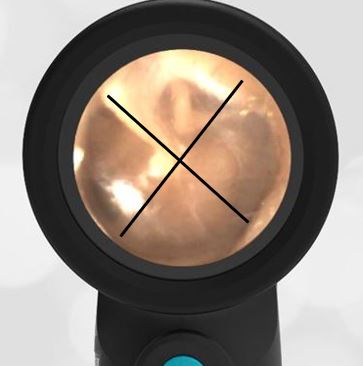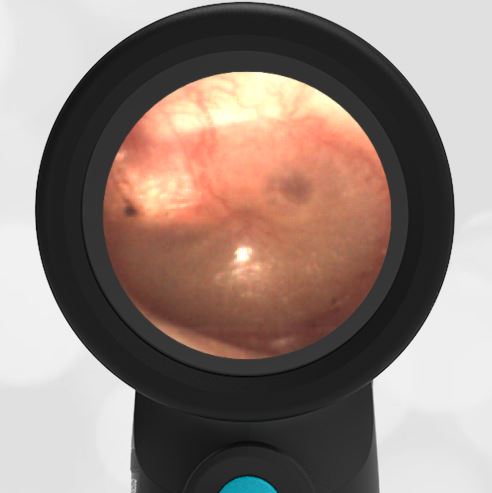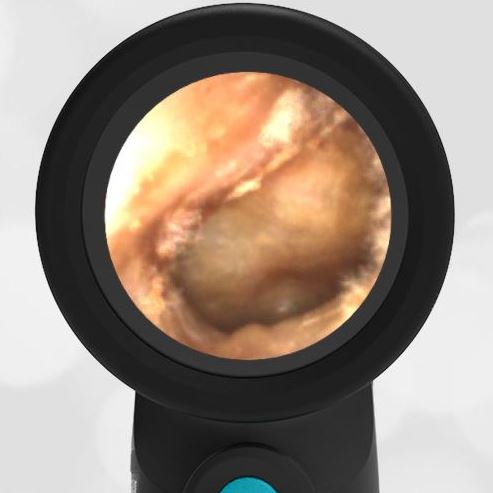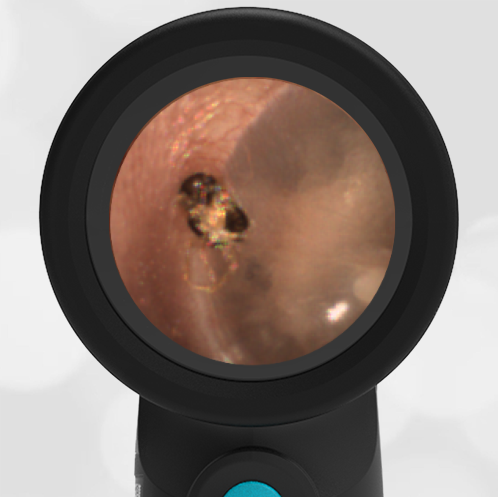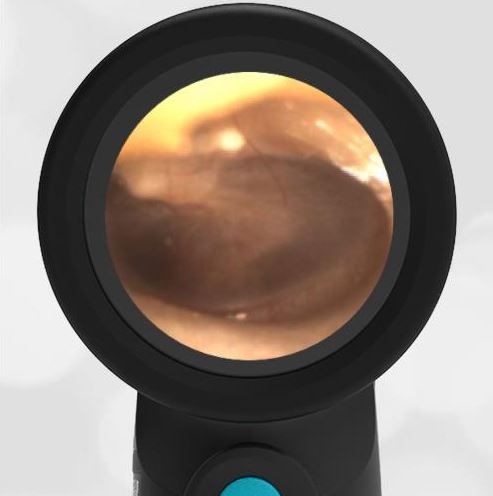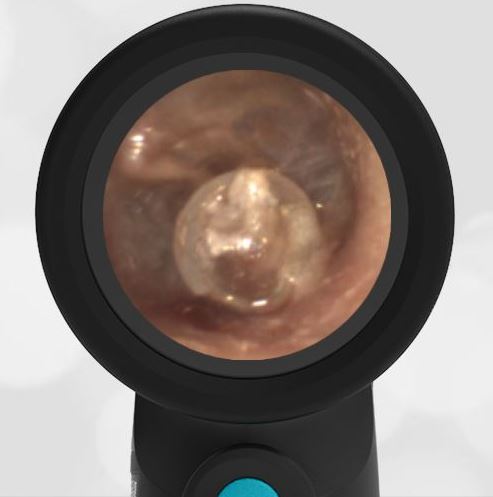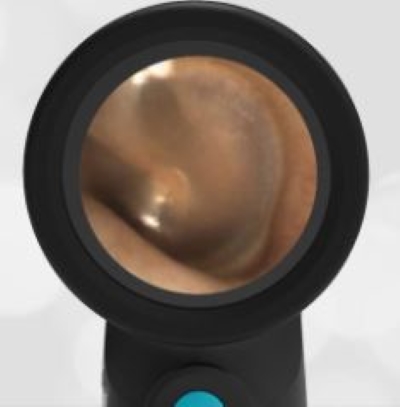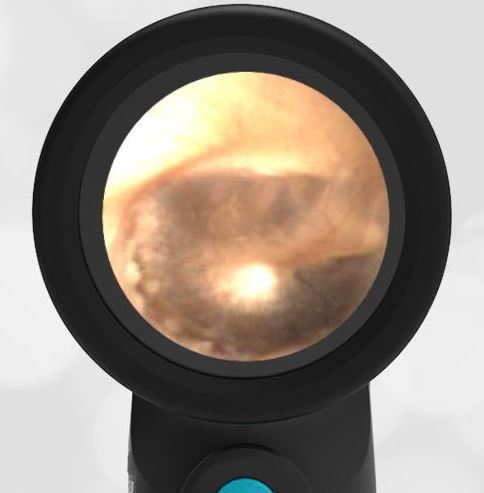
Eustachian Tube Dysfunction
A 53-year-old woman complains of mild discomfort in her right ear and a sensation that her ear is “clogged.” She compares it to the discomfort during an airplane in descent before the ear “pops.” She otherwise feels well. No cough, rhinorrhea, fever, sore throat, or weight loss. She does not have vertigo. She has not tried any medications for the symptoms.
The patient has eustachian tube dysfunction.
This diagnosis is not evident by the image alone. The image shows a pearly grey eardrum, normal bony landmarks, and a normal light reflex. The patient was asked to perform a Valsalva maneuver during which the following video was obtained:
Prior to treatment – no movement of the ear drum when patient performs Valsalva
In this video, there is no movement of the eardrum when the patient increases the middle ear pressure with the Valsalva maneuver. This suggests that pressure across the eardrum is not being properly equalized by the eustachian tube. This is known as eustachian tube dysfunction and can be quite uncomfortable. The eustachian tube vents the middle ear to the back of the nose. For most of its course, it’s like a floppy, hollow noodle. It can become inflamed, causing it to be “sticky” and limiting its ability to properly vent the middle ear space. A difference in pressure across the eardrum causes the familiar feeling of discomfort in an airplane in descent. More information on ear anatomy can be found on this Wispr University article.
Eustachian tube dysfunction can occur for a number of reasons including allergies, infection, and irritants. Less likely causes would be anatomical changes associated with trauma or lesions. Initial treatment in the primary care clinic could include decongestants or steroids. Evidence for the effectiveness of treatment is not strong. If the patient continues to have symptoms, they should be referred to otolaryngology.
In this case, the patient was trialed on a nasal decongestant. On re-evaluation, the patient reported improved comfort and a repeat video exam showed mobility of the tympanic membrane at the pars flaccida.
You can see this as the increase in the brightness as the top of the eardrum moves:
After nasal decongestant – movement of pars flaccida with Valsalva
Use of a nasal decongestant is not recommended for more than a few days. When the patient discontinued use, her symptoms returned. She was referred to otolaryngology.

